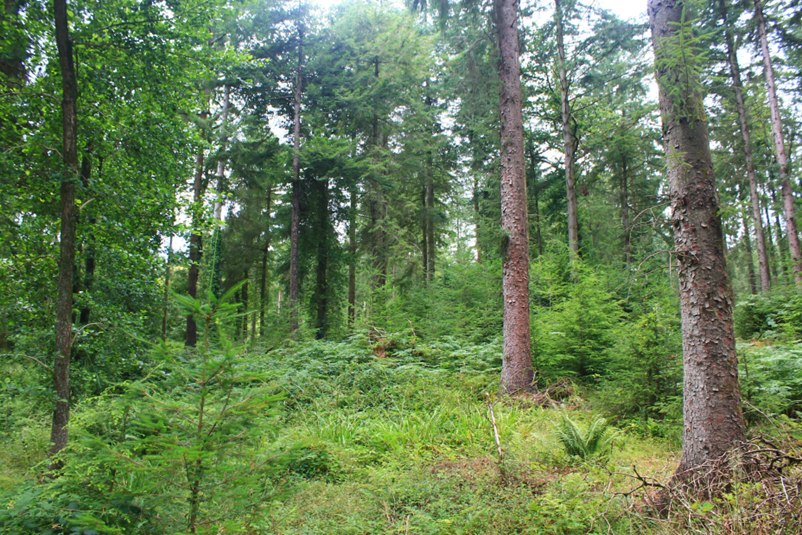Patrick Cook gives an update on his research into how alternative forest management techniques could better support biodiversity in conifer plantations.
Woodlands in the UK have a long history of management but since the early 20th Century conifer plantations have frequently become the dominant woodland cover in some landscapes. Plantations are often considered poor for biodiversity, as they have limited structural complexity and consist of single species monocultures, usually of non-native tree species such as Sitka Spruce. Usually, plantations are managed using a technique called clear-fell and replant, which has been criticised for the impacts it has on biodiversity, the provision of ecosystem services and local communities.
Increasingly, forest managers are looking towards alternative and more sustainable management techniques, to increase resilience of plantations to the growing threats of climate change and tree diseases. Such changes will allow the delivery of wider multi-functional benefits beyond timber production, including better provision of habitats for biodiversity. Irregular silviculture, a continuous cover forestry technique, involves the selective removal of individual trees and maintenance of a permanently irregular canopy. Vertical structural complexity develops as lower and spatially dispersed tree stocking allows light to reach the forest floor facilitating natural regeneration and development of a varied understorey. Over time, stand heterogeneity and vertical structural diversity increase, which alongside the promotion of mixed stands of conifer and broadleaf tree species, is expected to benefit biodiversity at the stand and landscape scale.
There is a need to understand how this technique could benefit biodiversity. Butterfly Conservation undertook a multi-taxonomic study, investigating habitat structural features which influence biodiversity, in plantations undergoing transformation towards irregular high forest. The study was carried out on the Stourhead Western Estate and National Trust Stourhead Estate on the Wiltshire/Somerset Border, southern England, which have some of the best developed irregular conifer stands in the UK.
The first paper from the study, investigating bats, was published in 2023. A total of 13 species, equivalent to 76% of the UK resident species were recorded, including several scarce species such as the Barbastelle Barbastella barbastellus. We found four species of bat responded to habitat features including larger mean tree diameter, greater canopy openness, higher vertical structural complexity, higher quantities of standing and fallen deadwood, and higher canopy cover of broadleaved trees.
Habitat features such as larger tree diameters which are often rare in conifer plantations, broadleaved trees which have peeling bark and higher quantities of deadwood provide suitable roosting locations for bats. The flexibility of irregular silviculture also allows the retention of trees with key characteristics that would be suitable for roosting bats. Habitat features such as higher cover of broadleaf trees, greater canopy openness and higher vertical structural complexity improve foraging opportunities for bats by improving access within the stands and increasing the amount of invertebrate prey available to bat species.
Many of the habitat features identified in the study are more prevalent in stands further progressed towards irregular high forest. This suggests that this flexible technique can simultaneously support bat populations and timber production at the local scale and if combined with other novel management techniques will diversify woodlands at the landscape scale for bats.
Read the full paper here


